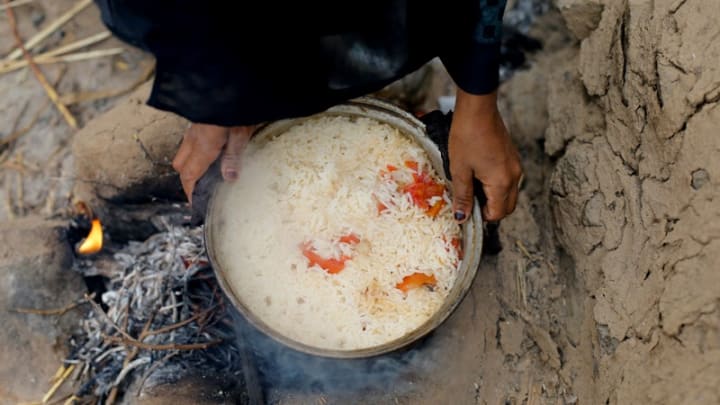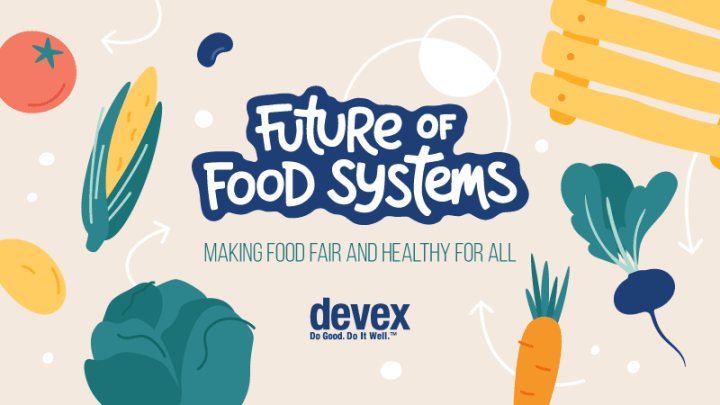
Conflict, pandemic-related economic shocks, and climate change are compounding to send hunger levels in food-insecure countries to a five-year high, according to the 2021 “Global Report on Food Crises.”
An estimated 20 million more people were food insecure in 2020 than in 2019, according to the report, which was produced by the Global Network Against Food Crises — an alliance of development and humanitarian organizations founded by the United Nations’ Food and Agriculture Organization and World Food Programme, as well as the European Union. The report examines 55 countries and territories that are either receiving international humanitarian assistance to feed people or where there is evidence local capacity is not sufficient to respond to food crises.
“The ... [2021] ‘Global Report on Food Crises’ makes very grim reading. This is reality. … This is what we're facing,” WFP Executive Director David Beasley said Wednesday at a virtual launch event. “Conflict continues to remain the driver of hunger emergencies. But the report honestly and clearly provides an insight into how COVID-19 is now aggravating food insecurity with its economic deteriorating impact around the world. And the truth is, there’s a whole lot more pandemic-related pain to come in 2021.”
The report found that using the Integrated Food Security Phase Classification, known as IPC, at least 155 million people in 55 countries and territories were classified as facing “Crisis [phase 3] or worse levels” of food insecurity. It also found that 208 million people in 43 countries and territories were in phase 2 — on the brink of experiencing acute hunger. The IPC scale has five phases, the most serious of which is famine.
The report predicts that Yemen and South Sudan will experience famine conditions this year.
“We need an urgent injection of funding from the international community just to avoid widespread famine.”
— David Beasley, executive director, WFPConflict and insecurity were the main drivers of food crises in 23 countries and territories, impacting nearly 100 million people in IPC phase 3 or above. This is up from 2019, where 77 million people in 22 countries and territories were at crisis levels.
“Tragically, this report is just the tip of the iceberg that we’re facing all around the world,” Beasley said. “The global picture is even more bleak when we consider all countries significantly impacted by hunger. For example, chronic hunger, which was 690 million, is now up an additional 130 million people.”
Get development's most important headlines in your inbox every day.
Thanks for subscribing!
In 2020, the 10 countries with the highest number of people in IPC phase 3 were the Democratic Republic of Congo, Yemen, Afghanistan, Syria, Sudan, Nigeria, Ethiopia, South Sudan, Zimbabwe, and Haiti. At least 2 million people are just one step away from famine in Afghanistan, the Democratic Republic of Congo, Sudan and Yemen, the report found.
From 2019 to 2020, 12 countries saw large increases in the numbers of food-insecure people in absolute terms. Over 15.8 million children under 5 years old were wasted in 2020, with nearly half of those living in the 10 worst food crises.
“Repeated adverse events” have gradually reduced the capability of vulnerable households to recover from shocks, a summary of the report found, and created a “perfect storm” that is driving up levels of acute food insecurity.
Part of our The Future of Food Systems series
Find out how we can make food fair and healthy for all. Join the conversation using the hashtag #FoodSystems and visit our The Future of Food Systems page for more coverage.
Predictions for 2021 were equally bleak. The report summary said that ongoing conflict, the continuing pandemic, and “the perennial threat of poor rainfall and adverse weather events” will continue to drive up hunger numbers. Five countries are expected to have at least 12 million people in IPC phase 3 or above, with 142 million total people estimated to be in crisis or worse this year.
Beasley said international donors must step up to help countries avoid the worst.
“We thought that COVID would be behind us by 2021. But now, despite this, governments in lower- and middle-income nations are facing extraordinary levels of debt, declining currencies, increasing inflation, and now their capacity to cope with further shocks has been severely depleted. … They simply don’t have the resources to provide the social protection programs required to stave off widespread hunger,” Beasley said.
“Time is running out. Quickly. We need an urgent injection of funding from the international community just to avoid widespread famine. … We need $5 billion just for that.”
Visit the Future of Food Systems series for more coverage on food and nutrition — and importantly, how we can make food fair and healthy for all. You can join the conversation using the hashtag #FoodSystems.

Printing articles to share with others is a breach of our terms and conditions and copyright policy. Please use the sharing options on the left side of the article. Devex Pro subscribers may share up to 10 articles per month using the Pro share tool ( ).
"conflict" - Google News
May 06, 2021 at 04:13AM
https://ift.tt/3xSgmje
Conflict, COVID-19, climate change send hunger to 5-year high - Devex
"conflict" - Google News
https://ift.tt/3bZ36xX
https://ift.tt/3aYn0I8
Bagikan Berita Ini














0 Response to "Conflict, COVID-19, climate change send hunger to 5-year high - Devex"
Post a Comment